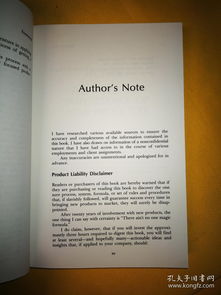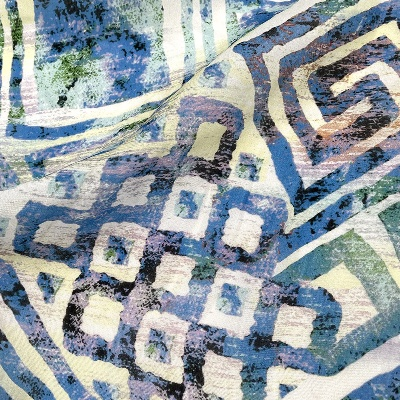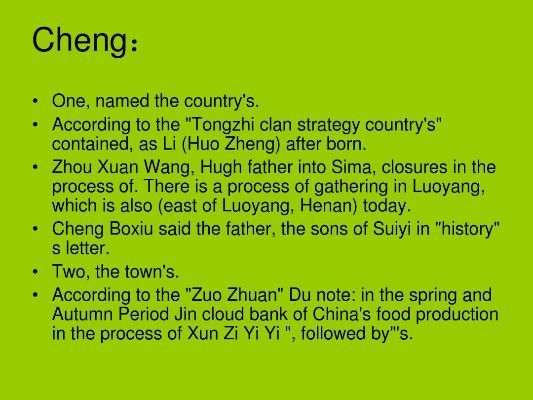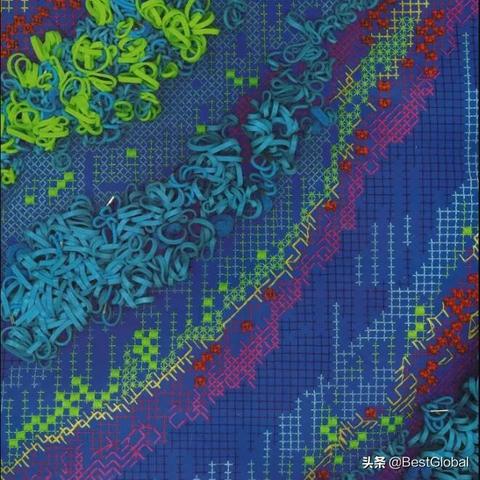The Art and Science of Textile Inspection
: The Art and Science of Textile Inspection,In the realm of textiles, the art and science of inspection are integral to ensuring quality and consistency in manufacturing. This process involves a meticulous examination of fabrics for defects such as color variations, thread breaks, and structural flaws that could compromise the final product's aesthetic appeal or functionality.,The inspection process begins with a thorough visual assessment of the fabric's appearance. This includes noting any irregularities in color, pattern, or texture that may indicate improper dyeing or weaving techniques. A keen eye is required to detect even subtle variations in color intensity or pattern alignment, as these can have significant impacts on the overall appearance and performance of the textile.,Once the initial visual inspection has been completed, the fabric undergoes a more detailed analysis using specialized tools such as calipers, magnifying glasses, and microscopes. These tools enable technicians to measure the precise dimensions of threads, yarns, and seams, and identify any discrepancies from the desired specifications.,In addition to physical measurements, the inspection process also includes chemical tests to assess the integrity of the fabric's fibers and the quality of the dyes used. These tests help ensure that the fabric meets industry standards for durability, strength, and environmental sustainability.,Overall, the art and science of textile inspection involve a combination of technical expertise, attention to detail, and critical thinking. By employing a comprehensive approach that combines both qualitative and quantitative measures, manufacturers can ensure that their products meet the highest standards of quality and performance.
Introduction: Textile inspection is a crucial aspect of the textile industry, as it ensures that products meet quality standards and consumer expectations. In this digital age, with the advent of advanced technologies, textile inspection has become more efficient and accurate than ever before. However, for those who are interested in delving deeper into this field, there are many opportunities to learn and grow within the world of textile inspection.
What is Textile Inspection? Textile inspection involves the examination of textile materials to ensure they meet specific standards and requirements. This process includes testing for defects such as color variations, shrinkage, and tear strength, as well as evaluating fabrics for quality control purposes. Textile inspectors use various tools and techniques to analyze samples and make informed decisions about the suitability of products for sale or use.
Why Learn About Textile Inspection? There are several reasons why learning about textile inspection is beneficial. Firstly, it provides an understanding of the importance of quality control in the textile industry. By gaining knowledge about how products are tested and evaluated, you can appreciate the value of high-quality materials and products. Secondly, textile inspection is a versatile career path that offers numerous opportunities for growth and development. From working in a lab setting to managing an entire inspection facility, there are many roles available in this field that require specialized skills and knowledge. Finally, textile inspection is a field that is constantly evolving, with new technologies and methods being introduced regularly. By keeping up with the latest trends and advancements, you can stay ahead of the curve and stay relevant in the industry.
How to Get Started in Textile Inspection? If you're interested in learning more about textile inspection, there are several steps you can take to get started. Firstly, research different training programs and certification courses offered by institutions of higher education or professional organizations in your area. These resources can provide valuable information about the qualifications required to enter the field and the courses offered. Secondly, explore online resources such as educational videos, articles, and forums that discuss the basics of textile inspection. You can also attend webinars or conferences related to the industry to gain hands-on experience and insights from experts in the field. Thirdly, consider joining a local textile inspection company or organization to gain practical experience and network with professionals in the industry. This could be a great way to learn about the day-to-day operations of an inspection facility and develop valuable skills in real-world settings.

Case Study: One example of a successful textile inspection case study is the work of Dr. Jane Smith at the Textile Institute in New York City. Dr. Smith is a leading expert in the field of textile inspection, and she has been instrumental in developing new methods and technologies for detecting defects in fabrics. Her research has led to the creation of a range of innovative instruments and equipment that have improved accuracy and efficiency in textile inspection processes. As a result, Dr. Smith has played a key role in ensuring that high-quality products are produced in the textile industry, while also promoting innovation and progress in the field.
Conclusion: Learning about textile inspection is a rewarding experience that offers numerous opportunities for growth and development. Whether you're interested in pursuing a career in the industry or simply want to understand the importance of quality control in the textile industry, there are many resources available to help you achieve your goals. With dedication, hard work, and a passion for learning, you can become an expert in textile inspection and make a positive impact on the world around you.
大家好,今天我想和大家分享一个关于纺织品检测的话题,随着纺织行业的快速发展,纺织品的质量和检测技术越来越受到重视,学习纺织品检测不仅可以提升个人技能,还能为纺织品的品质和安全提供有力保障,下面,我们将通过一个英文案例和表格来详细介绍纺织品检测的相关知识。
纺织品检测的重要性
纺织品检测是确保纺织品质量的重要手段,通过纺织品检测,可以确保纺织品的各项性能指标符合国家标准,从而保障消费者的使用安全和健康,纺织品检测还可以为纺织品的生产、销售和贸易提供有力支持。
纺织品检测的种类和流程
纺织品检测的种类繁多,包括纤维含量检测、质量检测、安全性检测等,具体流程包括样品采集、样品处理、仪器检测等步骤,在样品采集方面,需要按照国家标准要求采集样品,确保样品具有代表性,在样品处理方面,需要对样品进行预处理,以提高检测的准确性和可靠性,在仪器检测方面,可以使用各种检测仪器进行测试,如拉力测试仪、密度测试仪等。
案例分析

以某品牌纺织品为例,进行案例分析,该品牌在纺织品检测方面采用了先进的检测技术和设备,确保了纺织品的质量和安全,具体案例如下:
- 样品采集:该品牌从消费者手中收集了多种不同材质的纺织品样品,确保样品具有代表性。
- 样品处理:该品牌对样品进行了严格的预处理,包括去除杂质、调整湿度等,以提高检测的准确性和可靠性。
- 仪器检测:该品牌使用先进的拉力测试仪和密度测试仪等仪器进行测试,得到了准确的检测结果,该品牌还对检测结果进行了严格的审核和确认,确保了检测结果的准确性和可靠性。
表格说明
以下是关于纺织品检测的一些表格说明:
表格1:纺织品检测种类
| 检测种类 | 描述 |
|---|---|
| 纤维含量检测 | 确定纺织品的纤维种类和含量 |
| 质量检测 | 评估纺织品的各项性能指标是否符合国家标准 |
| 安全性检测 | 检查纺织品是否符合相关安全标准 |
表格2:纺织品检测流程
| 步骤 | 描述 |
|---|---|
| 样品采集 | 按照国家标准要求采集样品 |
| 样品处理 | 对样品进行预处理,提高检测的准确性和可靠性 |
| 仪器检测 | 使用各种检测仪器进行测试 |
学习纺织品检测的建议和注意事项
学习纺织品检测需要掌握相关的知识和技能,建议大家在学习的过程中多看相关书籍、参加培训课程、实践操作等,还需要注意以下几点:
- 学习要系统化:学习纺织品检测需要有一个系统的学习过程,从基础知识到实际应用都需要掌握。
- 多实践操作:实践是掌握技能的关键,在学习过程中要多进行实践操作,提高自己的技能水平。
- 注意安全:在进行纺织品检测时需要注意安全,遵守相关操作规程,确保自己和他人的安全。
纺织品检测是确保纺织品质量的重要手段,学习纺织品检测不仅可以提升个人技能,还能为纺织品的品质和安全提供有力保障,希望本文能够为大家提供一些有用的信息和建议,让大家能够更好地掌握纺织品检测的相关知识和技能。
Articles related to the knowledge points of this article:
Navigating the Global Market with Nantong Jinmen Textiles
Patterns on Windows:A Visual Journey through Textile Design
The Fabric of Luxury:An In-depth Look at Shangbo Hotel Textiles
A Comprehensive Overview of Textile Industry Knowledge Notes



